I noticed that Fastai appears to be slower than PyTorch Lightning on my machine.
For instance, the code below is used to classify the CIFAR-10 dataset. It utilizes a ResNet32 model implemented by Timm and was trained for a total of 20 epochs. The dataloaders were created to be as similar as possible.
Fastai code
import os
os. environ['CUDA_VISIBLE_DEVICES'] = '0'
import numpy as np
import pandas as pd
import matplotlib.pyplot as plt
import seaborn as sns
from functools import partial
from fastai.callback.wandb import WandbCallback
from fastai.vision.all import *
import pytorch_lightning as pl
from torch import nn
import timm
import wandb
wandb.init(project="timm", name="fastai")
path = untar_data(URLs.CIFAR)/'train'
test_path = untar_data(URLs.CIFAR)/'test'
device = torch.device("cuda:0")
aug_batch_tfms = [
Flip(p = 0.5),
RandomResizedCropGPU(
size = 32,
min_scale = 0.8,
max_scale =1.0,
ratio = (0.9, 1.1),
p = 0.9
)
]
db = DataBlock(
blocks=(ImageBlock, CategoryBlock),
get_items=get_image_files,
get_y= parent_label,
splitter = RandomSplitter(valid_pct=0.1, seed=42),
n_inp=1,
batch_tfms = aug_batch_tfms + [Normalize.from_stats(*cifar_stats)]#+aug_batch_tfms
)
dls = db.dataloaders(
path,
num_workers=4,
bs = 64
).to(device)
res32 = timm.create_model(
model_name = 'resnet34',
pretrained= False, in_chans = 3, num_classes=10)
learn = Learner(
dls = dls, model = res32, loss_func = CrossEntropyLossFlat(),
cbs = [ShowGraphCallback(), WandbCallback(log_preds_every_epoch = True)],
opt_func=partial(SGD, mom = 0.9, wd = 1e-4),
metrics = accuracy).to_fp16()
# learn.lr_find()
learn.fit_one_cycle(20, 0.001)
Pytorch lightning code
I am not familiar with PyTorch Lightning. This training framework was written by modifying this toturial.
import os
os. environ['CUDA_VISIBLE_DEVICES'] = '1'
import numpy as np
import pandas as pd
import matplotlib.pyplot as plt
import seaborn as sns
from PIL import Image
from lightning.pytorch.loggers import WandbLogger
from pytorch_lightning.callbacks import LearningRateMonitor, ModelCheckpoint
import torch
import torch.nn as nn
import torch.utils.data as data
import torch.optim as optim
# Torchvision
import torchvision
from torchvision.datasets import CIFAR10
from torchvision import transforms
import pytorch_lightning as pl
import timm
import wandb
wandb.init(project="timm", name="lightning")
# Path to the folder where the datasets are/should be downloaded (e.g. CIFAR10)
DATASET_PATH = "../data"
# Path to the folder where the pretrained models are saved
CHECKPOINT_PATH = "../saved_models/tutorial5"
device = torch.device("cuda:0") if torch.cuda.is_available() else torch.device("cpu")
train_dataset = CIFAR10(root=DATASET_PATH, train=True, download=True)
DATA_MEANS = (train_dataset.data / 255.0).mean(axis=(0,1,2))
DATA_STD = (train_dataset.data / 255.0).std(axis=(0,1,2))
print("Data mean", DATA_MEANS)
print("Data std", DATA_STD)
test_transform = transforms.Compose([transforms.ToTensor(),
transforms.Normalize(DATA_MEANS, DATA_STD)
])
# For training, we add some augmentation. Networks are too powerful and would overfit.
train_transform = transforms.Compose([transforms.RandomHorizontalFlip(),
transforms.RandomResizedCrop((32,32), scale=(0.8,1.0), ratio=(0.9,1.1)),
transforms.ToTensor(),
transforms.Normalize(DATA_MEANS, DATA_STD)
])
# Loading the training dataset. We need to split it into a training and validation part
# We need to do a little trick because the validation set should not use the augmentation.
train_dataset = CIFAR10(root=DATASET_PATH, train=True, transform=train_transform, download=True)
val_dataset = CIFAR10(root=DATASET_PATH, train=True, transform=test_transform, download=True)
pl.seed_everything(42)
train_set, _ = torch.utils.data.random_split(train_dataset, [45000, 5000])
pl.seed_everything(42)
_, val_set = torch.utils.data.random_split(val_dataset, [45000, 5000])
# Loading the test set
test_set = CIFAR10(root=DATASET_PATH, train=False, transform=test_transform, download=True)
# We define a set of data loaders that we can use for various purposes later.
train_loader = data.DataLoader(train_set, batch_size=64, shuffle=True, drop_last=True, pin_memory=True, num_workers=4)
val_loader = data.DataLoader(val_set, batch_size=64, shuffle=False, drop_last=False, num_workers=4)
test_loader = data.DataLoader(test_set, batch_size=64, shuffle=False, drop_last=False, num_workers=4)
class CIFARModule(pl.LightningModule):
def __init__(self, optimizer_name, optimizer_hparams):
"""
Inputs:
model_name - Name of the model/CNN to run. Used for creating the model (see function below)
model_hparams - Hyperparameters for the model, as dictionary.
optimizer_name - Name of the optimizer to use. Currently supported: Adam, SGD
optimizer_hparams - Hyperparameters for the optimizer, as dictionary. This includes learning rate, weight decay, etc.
"""
super().__init__()
# Exports the hyperparameters to a YAML file, and create "self.hparams" namespace
self.save_hyperparameters()
# Create model
self.model = timm.create_model(
model_name = 'resnet34',
pretrained= False, in_chans = 3, num_classes=10)
# Create loss module
self.loss_module = nn.CrossEntropyLoss()
# Example input for visualizing the graph in Tensorboard
self.example_input_array = torch.zeros((1, 3, 32, 32), dtype=torch.float32)
def forward(self, imgs):
# Forward function that is run when visualizing the graph
return self.model(imgs)
def configure_optimizers(self):
# We will support Adam or SGD as optimizers.
if self.hparams.optimizer_name == "Adam":
# AdamW is Adam with a correct implementation of weight decay (see here for details: https://arxiv.org/pdf/1711.05101.pdf)
optimizer = optim.AdamW(
self.parameters(), **self.hparams.optimizer_hparams)
elif self.hparams.optimizer_name == "SGD":
optimizer = optim.SGD(self.parameters(), **self.hparams.optimizer_hparams)
else:
assert False, f"Unknown optimizer: \"{self.hparams.optimizer_name}\""
# We will reduce the learning rate by 0.1 after 100 and 150 epochs
# scheduler = optim.lr_scheduler.MultiStepLR(
# optimizer, milestones=[100, 150], gamma=0.1)
scheduler = optim.lr_scheduler.MultiStepLR(
optimizer, milestones=[10, 15], gamma=0.1)
return [optimizer], [scheduler]
def training_step(self, batch, batch_idx):
# "batch" is the output of the training data loader.
imgs, labels = batch
preds = self.model(imgs)
loss = self.loss_module(preds, labels)
acc = (preds.argmax(dim=-1) == labels).float().mean()
# Logs the accuracy per epoch to tensorboard (weighted average over batches)
self.log('train_acc', acc, on_step=False, on_epoch=True)
self.log('train_loss', loss)
return loss # Return tensor to call ".backward" on
def validation_step(self, batch, batch_idx):
imgs, labels = batch
preds = self.model(imgs)
loss = self.loss_module(preds, labels)
acc = (preds.argmax(dim=-1) == labels).float().mean()
# By default logs it per epoch (weighted average over batches)
self.log('val_acc', acc)
self.log('valid_loss', loss)
def test_step(self, batch, batch_idx):
imgs, labels = batch
preds = self.model(imgs).argmax(dim=-1)
acc = (labels == preds).float().mean()
# By default logs it per epoch (weighted average over batches), and returns it afterwards
self.log('test_acc', acc)
def train_model(model_name = 'resnet32', save_name=None, **kwargs):
"""
Inputs:
model_name - Name of the model you want to run. Is used to look up the class in "model_dict"
save_name (optional) - If specified, this name will be used for creating the checkpoint and logging directory.
"""
if save_name is None:
save_name = model_name
# Create a PyTorch Lightning trainer with the generation callback
wandb_logger = WandbLogger(project="CIFAR10",wandb_logger = WandbLogger(tags=['accuracy', 'loss']))
trainer = pl.Trainer(default_root_dir=os.path.join(CHECKPOINT_PATH, save_name), # Where to save models
accelerator="gpu", # We run on a GPU (if possible)
devices=1, # How many GPUs/CPUs we want to use (1 is enough for the notebooks)
max_epochs=20, # How many epochs to train for if no patience is set
callbacks=[ModelCheckpoint(save_weights_only=True, mode="max", monitor="val_acc"), # Save the best checkpoint based on the maximum val_acc recorded. Saves only weights and not optimizer
LearningRateMonitor("epoch")], # Log learning rate every epoch
enable_progress_bar=True,
logger=wandb_logger) # Set to False if you do not want a progress bar
trainer.logger._log_graph = True # If True, we plot the computation graph in tensorboard
trainer.logger._default_hp_metric = None # Optional logging argument that we don't need
pl.seed_everything(42) # To be reproducable
model = CIFARModule(**kwargs)
trainer.fit(model, train_loader, val_loader)
model = CIFARModule.load_from_checkpoint(trainer.checkpoint_callback.best_model_path) # Load best checkpoint after training
# Test best model on validation and test set
val_result = trainer.test(model, val_loader, verbose=False)
test_result = trainer.test(model, test_loader, verbose=False)
result = {"test": test_result[0]["test_acc"], "val": val_result[0]["test_acc"]}
return model, result
resnet_model, resnet_results = train_model(model_name="ResNet",
optimizer_name="SGD",
optimizer_hparams={"lr": 0.1,
"momentum": 0.9,
"weight_decay": 1e-4})
The duration of the training process is depicted in the plot below.
Moreover, I noticed that the GPU usage of fastai(CPU0) is lower pytorch lightning(CPU1).
What is the reason that resulted in this difference?
Pytorch lightning version: 2.0.7
Fastai version: 2.7.12

